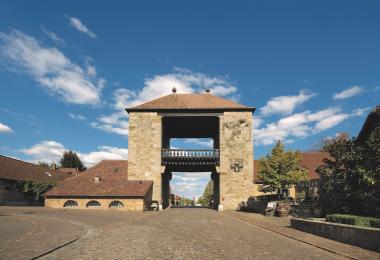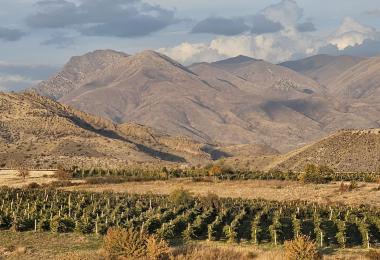Robert Alwin Schlumberger, a German cellar master at the renowned Champagne house Ruinart Pére et Fils, fell in love with Sophie Kirchner on a cruise on the Rhine River in 1841. Her parents would not agree to her moving to France, so Schlumberger followed his great love to Vienna, married, and founded his own sparkling wine cellar in 1842.
Robert Alwin Schlumberger brought sparkle and panache to the life of the aristocracy, not only on the Danube, but in Great Britain. Thanks to his successes at the Austria trade Exposition in Vienna and the International Exhibition in London, Schlumberger advanced to become an official purveyor to the Imperial Court in Austria and Queen Victoria’s Royal Court in Great Britain. Schlumberger sparkling wines were on board the SMS Novara on its around-the-world mission 1857-1859. Emperor Franz Joseph I recognised his services to Austria and ennobled Robert Alwin Schlumberger as “Edler von Goldeck” in 1878.
Austrian Innovation
Meanwhile, other Austrian producers began riddling and disgorging sparkling wine. The Kattus Sektkellerei, founded in 1890, still bears witness to this today. In 1851, innkeeper Joseph Winkelbauer and landlord Johann Winkler from Perchtoldsdorf invented a new technology to ensure the safe closure of sparkling wine bottles. In their patent application for their “clip made of drawn wire”, the two wrote that the typical French cast-iron locking clip regularly caused bottles to burst. This suggests Austria as the origin for the wire cage (muselet) commonly used to secure the cork stopper in sparkling wine bottles around the world today. Even if there is no hard evidence to back up the theory (yet), this story indicates the great importance of Sekt in Austria at that time.
Artisanal Austrian Sekt
Up until the year 1976, only dedicated specialists (Sektkellereien) were permitted to produce sparkling wine in Austria. Finally, through the efforts of the Kremstal winegrower Gerald Malat, individual wine estates were allowed to produce their own Sekt. This initiative began with a handful of pioneers who steadily improved their techniques to the point of achieving quite impressive international acclaim. There are now some 200 producers of grower Sekt in Austria. A lively and friendly exchange developed between winegrowers and the Sektkellereien ultimately making Sekt one of the major trends in Austria’s wine sector.

Sekt Austria (PDO)
Created in 2015, the quality pyramid for Austrian Sekt with protected designation of origin, called “Sekt Austria”, has three categories and offers consumers clear orientation. The category Sekt Austria brings freshness and good cheer – everyday fizzy fun. Sekt Austria Reserve requires a significantly longer maturation time on the lees (18 months), and bottle fermentation is mandatory. These wines play in the same league as Spumante, Cava, and Crémant. At the peak of the pyramid, Sekt Austria Grosse Reserve has a justified claim to being one of the best sparkling wines in the world, on a par with the likes of Franciacorta and Champagne. Consumers instantly recognize these three categories of Sekt Austria via the red-white-red federal inspection seal on the capsule.
Whether greeting guests or whetting the appetite for a festive meal, Austrian Sekt sparkles brilliantly in the glass during the holiday season. All quality categories of Sekt Austria (PDO) are also excellent companions for a wide range of dishes. When drunk alongside food, the carbon dioxide functions as a flavour enhancer. As a general rule, the more full-bodied the Sekt the richer the dish may be.
Find more information on Austria Sekt (PDO) here.








